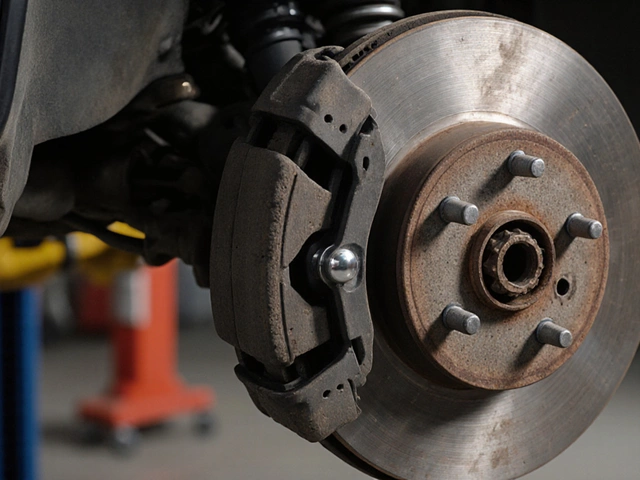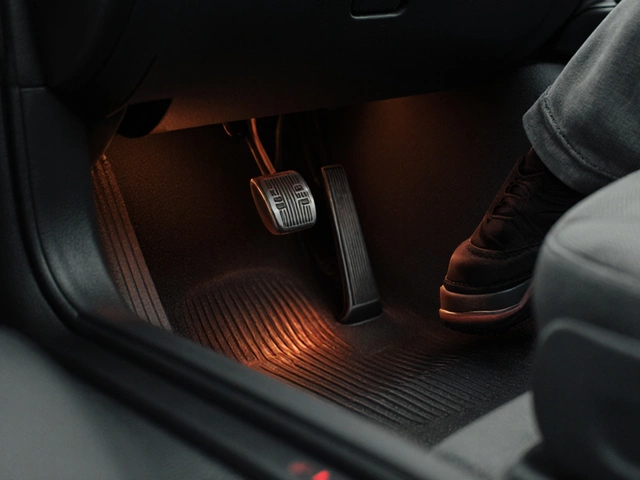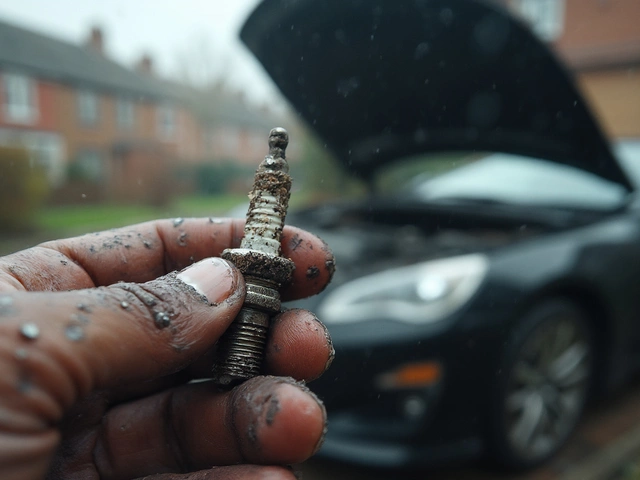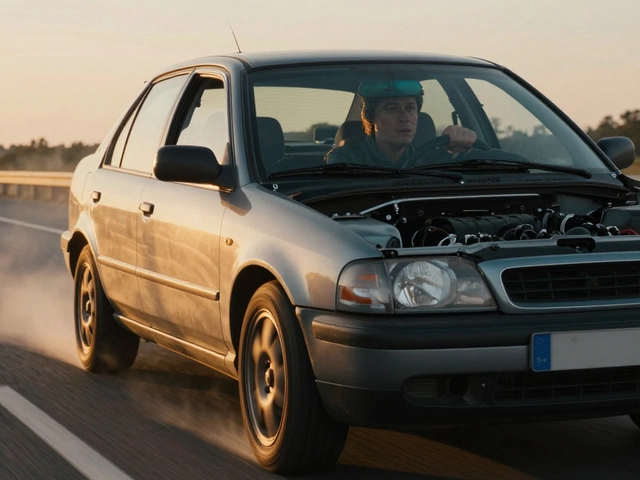Brake pads aren’t the sexiest car part, but you’ll miss them real fast if they wear out—trust me, that grinding sound isn’t music. How much does it cost to just do the pads? Most drivers pay anywhere from $100 to $300 per axle (that means front or rear), depending on the type of car you drive and where you go for service. If that number made you gulp, you’re not alone.
The price swings so much because some shops use budget brake pads that might squeak a month later, while others will push you toward fancy ceramics that last longer but cost more. Labor is the other wild card; a quick job on a Honda sedan costs way less than wrenching on a luxury SUV with electronic everything.
There’s also no rule that says you have to swap rotors and pads at the same time, though some places will try to sell you both. If you just need pads, make sure you say so. Curious about doing it yourself? You could save a chunk of cash, but you need the right tools and guts—messing this up could mean your brakes fail at the worst time. If you’re not sure, ask friends about local mechanics they trust. A little legwork can save you from paying for work you don’t need.
- What Affects Brake Pad Replacement Costs?
- Parts vs. Labor: Where Does Your Money Go?
- Dealership, Independent Shop, or DIY?
- Tips to Save Money on Brake Pad Replacements
What Affects Brake Pad Replacement Costs?
So, why can the price for brake pad replacement feel like spinning a roulette wheel? It boils down to a handful of really clear factors:
- Vehicle Type: Smaller, basic cars use cheaper pads and usually take less time in the shop. Trucks, SUVs, and anything luxury can see prices almost double because the parts are bigger, sometimes rare, and harder to work on.
- Quality of Parts: There’s a massive gap between economy pads and higher-end ceramic or OEM (original equipment manufacturer) pads. For example, basic pads might cost you $30 a set, while performance ones could run you $150 or more.
- Where You Get the Work Done: Dealerships almost always cost more—sometimes by $100 or more per axle. Chain stores and independent shops are usually cheaper but do your homework. The shop’s hourly labor rate matters too; city shops might charge twice as much as small-town garages.
- How Worn Your Pads Are: If you caught the problem early, you might only need new pads. But if you waited too long and the rotors are scored or warped, you’ll need those too, and that pushes up the cost quickly.
Here’s a quick peek at some average costs for different pads and vehicles, just to give you an idea:
| Type | Low-End | High-End |
|---|---|---|
| Economy Sedan | $100/axle | $225/axle |
| Luxury Sedan | $180/axle | $400/axle |
| SUV/Truck | $150/axle | $350/axle |
Seasonal deals can sometimes shave a chunk off your total. Also, if your car uses pads with wear sensors, that could nudge the price up too. The cost to replace brake pads is mostly about the mix of car, pad type, and who’s doing the work. If you phone a few shops and ask what’s included, you’ll get a much clearer picture of what you’re paying for—and what’s just extra fluff.
Parts vs. Labor: Where Does Your Money Go?
Ever wondered why swapping just the brake pads at a shop can drain your wallet? Here’s how the cost usually breaks down: about half goes to the parts themselves, and the other half goes into paying the mechanic for their time and know-how.
Let’s talk about the parts first. Brake pads can range from $30 a set for the cheap stuff to $120 or more if you go for high-end ceramic pads. Most shops carry a few options—budget, mid-range, and premium—so always ask what’s being installed on your car. Some mechanics mark up parts, while others let you bring your own (just double-check first).
Labor is the other chunk. Most shops charge for an hour of labor per axle, even though pros can get it done in under 45 minutes if there’s no rust or weirdness. Hourly rates can swing from $75 at a small neighborhood spot to $160 at a dealership. Messy bolts, older cars, or extra inspection can tack on time.
| Service | Typical Cost Range |
|---|---|
| Front or Rear Brake Pads (Parts) | $30–$120 |
| Labor (Per Axle) | $75–$160 |
Here’s a tip: if a shop is quoting over $300 for basic brake pad replacement, ask for a parts-and-labor breakdown. Sometimes “extras” like cleaning, pad sensors, or anti-squeal goop get tacked on, so know what you’re paying for. Also, some cars have electronic parking brakes or extra sensors that make labor pricier. Always ask your mechanic if anything extra is required for your model—it can save you a surprise.

Dealership, Independent Shop, or DIY?
When it’s time to change brake pads, you’ve got three real options. The dealership, the neighborhood garage, or rolling up your sleeves at home. Each comes with its pros, cons, and very different price tags.
Dealerships usually have the highest prices. You’re paying for brand-name parts, fancy waiting rooms, and certified mechanics who know your model inside and out. On average, expect to pay $250–$350 per axle at a dealership in 2025, even for a basic sedan. The upside? Genuine parts and service records that keep your warranty squeaky clean. The downside? You’re paying top dollar, and some dealers will always suggest a full brake job even if you just want the pads.
Independent shops can save you serious money, often charging $150–$250 per axle for the same work. They’ll use quality aftermarket parts and you can actually talk to the person turning the wrenches. According to RepairPal, “Independent mechanics perform 75% of all post-warranty work in the US, usually at prices 20%–30% below dealerships.”
“If your car’s out of warranty, a reputable independent shop is just as good as the dealership—maybe better—if you value straight answers and savings.” — Consumer Reports
Thinking about DIY? Pads themselves range from $35 to $120 a set, depending on what you buy and where. So, you could drive away with a brake job for under $100 if you’re handy and already have tools. Just make sure you follow a proper guide for your car. If you mess up, you’re risking way more than what you saved. Not sure if you can tackle it? There’s no shame in calling in an expert.
| Dealership | Independent Shop | DIY | |
|---|---|---|---|
| Typical Cost (per axle) | $250–$350 | $150–$250 | $35–$120 (parts) |
| Warranty | Usually OEM warranty | Varies | None unless you buy premium pads |
| Average Turnaround | Same day to a few hours | Usually same day | Varies by skill level |
No matter what route you pick, always get a quote in writing. Prices can swing by $100 or more—even in the same town. If a shop seems shifty or won’t explain their pricing, walk away. There are plenty more out there who will treat you right.
Tips to Save Money on Brake Pad Replacements
Getting new brake pads doesn’t have to bleed your wallet. There are some easy, smart ways to keep costs down without cutting corners on safety. Here’s how you can save cash while getting the most out of your brake pads replacement:
- Compare quotes. Prices often change a lot between shops—even for the same car and job. Call around or check quotes online before booking anywhere. Sometimes a shop will match a competitor’s price if you ask.
- Bring your own parts. Many mechanics are okay with you buying your own brake pads online or at an auto parts store (think AutoZone or O’Reilly). Pads can cost half as much this way, and brands are easy to compare by reviews. Just check with your mechanic first—some charge a small fee or won’t warranty customer-supplied parts.
- Pick the right pad for your needs. Don’t pay top dollar for high-performance ceramic pads if you mostly drive in city traffic. Organic or semi-metallic pads are usually fine and can save $50-$100 per axle.
- Check for coupons and deals. The big chain shops (like Midas or Pep Boys) run specials and mail out coupons, usually for 10–20% off labor or parts. Local shops do, too—just ask.
- Learn simple checks. Sometimes all you need to do is clean your brakes or replace just the pads, not the whole lot. Ask your mechanic to inspect and measure before upselling you on extras like rotors or brake fluid. A quick measurement with a gauge can tell if your rotors need to go or not.
- Schedule replacements before problems start. Driving on worn-down pads can trash your rotors fast, which is way more expensive to fix. Replace pads once they’re at 3–4mm left (your mechanic can check this).
Thinking of doing it yourself? Basic tools (a jack, wrench, and C-clamp) will set you up, and YouTube is packed with step-by-step videos for most car models. If you go DIY, take your time and make sure everything goes back together tight—brakes aren’t the place for guessing.
Here’s a quick look at typical cost breakdowns to help you compare options:
| Method | Cost (Per Axle) | Notes |
|---|---|---|
| Dealership | $220–$320 | OEM parts, most expensive |
| Local Shop | $100–$200 | Mix of generic & brand pads |
| DIY | $30–$80 | Only pay for pads |
Try these tricks next time, and you’ll keep more money in your pocket while your brakes keep you safe.




